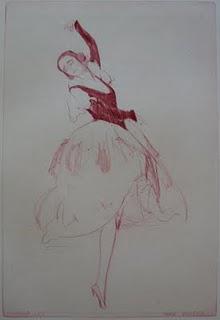 Max Pollak, Maria LeyDrypoint, 1924
Max Pollak, Maria LeyDrypoint, 1924Like Max Pollak, the subject of this drypoint Maria Ley emigrated to the United States, where she was known as Maria Ley-Piscator. Maria and her husband Erwin Piscator (a colleague and close friend of Bertolt Brecht) founded the Dramatic Workshop at the New School for Social Research. Among their pupils were Marlon Brando, Harry Belafonte, Walter Matthau, Tennessee Williams, and Tony Randall.

